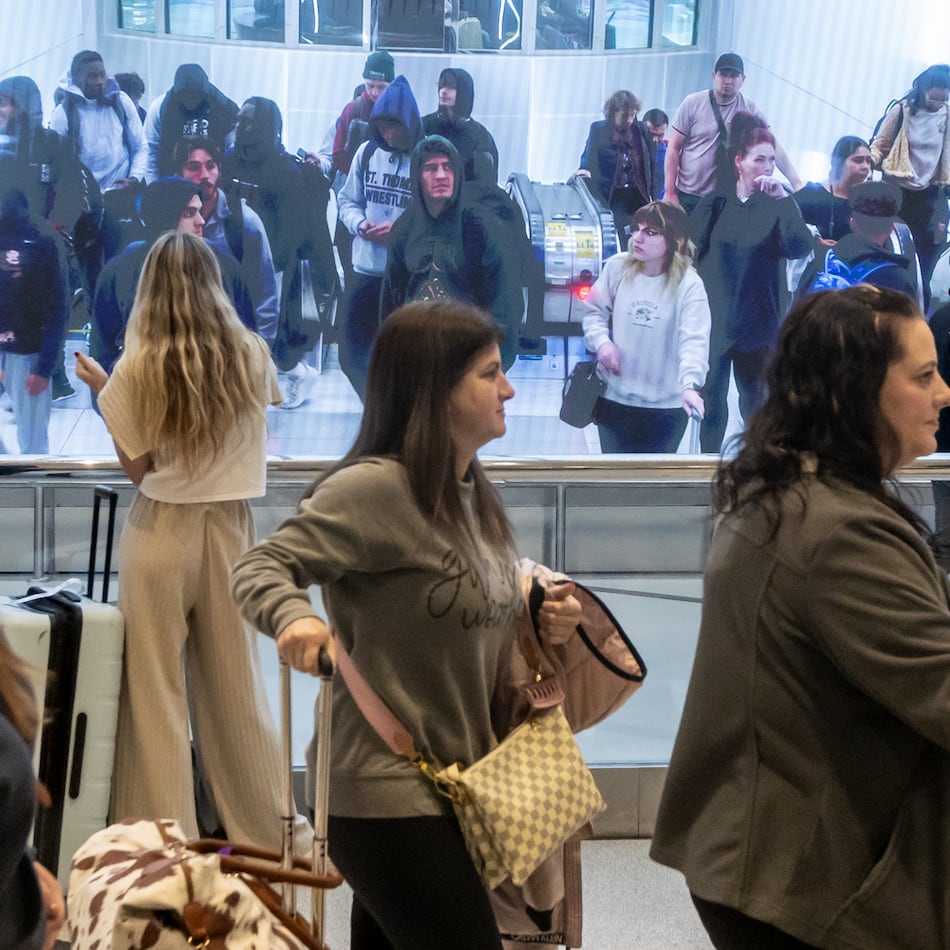Rodriquez Riley grew up in the Old Fourth Ward, where the 32-year-old used to admire street art. But the Black father of four cannot afford to live there now.
“They knocked down projects, built townhomes,” Riley said. There’s “a lot of stuff coming down, like dollar stores that we budget off of.”
Now Riley and his family live downtown with his mother.
Data released Wednesday by the National Community Reinvestment Coalition says, among the nation’s major metropolitan areas, Atlanta had the second highest number of Census tracts flip from majority Black to majority white between 1980 and 2020.
The report attempts to quantify gentrification in the country’s urban areas, while acknowledging the way to measure — or even think about — changing neighborhoods can vary.
“What one person sees as gentrification, another might view as needed revitalization,” the report says. “This lack of consensus makes it difficult to develop policies that address both the positive and negative effects of gentrification in an equitable way.”
By the organization’s metrics, Atlanta had the most intense gentrification from 2000 to 2012. The NCRC calculates gentrification mostly based on increased income levels, home values and college-educated residents, according to the report.
In Atlanta, nine Census tracts went from majority Black to majority white over 40 years beginning in 1980. Besides the Old Fourth Ward, they are in the East Atlanta, Reynoldstown, Kirkwood, Edgewood and Grant Park areas.
Four additional Census tracts went from majority-Black to “mixed,” according to the report.
Credit: Miguel Martinez-Jimenez
Credit: Miguel Martinez-Jimenez
Only Washington, D.C., had a higher number of Census tracts flip from Black to white, according to the NCRC. Los Angeles and Newark, New Jersey, also lost more majority-Black tracts than Atlanta, but more of those became majority-Hispanic or mixed, the organization’s data shows.
The report only looks at areas designated by the U.S. Census as “central city” tracts, which in metro Atlanta includes the cities of Atlanta and Sandy Springs and parts of Marietta.
Atlanta lost about 22,000 Black residents between 1980 and 2020, the fifth-highest number among metropolitan areas in the United States, the data shows.
“Ensuring genuine community engagement in the planning and assessment processes of revitalization efforts is essential to mitigate the worst impacts of gentrification,” the report states. “Without these measures, gentrification risks deepening inequality, displacing vulnerable communities and erasing the cultural and historical fabric of neighborhoods.”
Bruce Mitchell, principal researcher for the NCRC and the report’s lead author, said in cases of large-scale redevelopment, policymakers should require at least 15% to 20% of new construction to be affordable housing, provide rental assistance and programs for renters to attain homeownership.
On Tuesday afternoon, Riley and his family enjoyed the sunny, warm weather at the splash pad in Historic Fourth Ward Park which, along with the Beltline, has brought thousands of white residents to the area as the Black population declined.
Riley, who works at a fast-food restaurant, said decision-makers don’t understand what neighborhood natives like him need in order to stay.
“They closed my hospital,” he said, referring to the Atlanta Medical Center, which shuttered in 2022, leaving a sea of vacant buildings in the neighborhood.
The Old Fourth Ward did not lose as many Black residents as East Atlanta, Kirkwood or Edgewood, the data shows. But the racial shift is more stark in the Old Fourth Ward, where the white population spiked as large new apartment complexes rose along the Eastside Trail of the Beltline, which opened in 2012. Much of the new housing was built over formerly vacant industrial lots.
Matthew Whitney, 25, and his wife, 24-year-old Lauren, recently moved with their Australian shepherd mix, Murphy, to an Old Fourth Ward apartment complex. The couple, who are white, relocated from Houston for his tech job and chose their apartment after friends recommended the neighborhood.
Their building includes a trendy coffee shop. More restaurants and bars line the Beltline nearby.
“We were kind of looking for a place that’s really walkable and dog-friendly and outdoorsy,” Matthew Whitney said. “The Beltline played a big part in that for sure.”
Cole Scordino, 24, also relocated to an Old Fourth Ward apartment for a tech job in October. He is white and moved from Birmingham, Alabama.
“I work remote, so I wanted an area that was green, pleasant, safe, good food nearby,” he said.
The city, through Invest Atlanta, has provided legacy homeowners with financial assistance for repairs, and a city property tax assistance initiative is ramping up, said District 2 Council member Amir Farokhi, who lives in the Old Fourth Ward.
Credit: Miguel Martinez-Jimenez
Credit: Miguel Martinez-Jimenez
The program, called the Anti-Displacement Tax Fund, operates on the Westside, but Farokhi hopes it will spread to his neighborhood.
A 2018 city policy requires new rental projects around the Beltline to include affordable units. The required proportion varies depending on how low developers are willing to set the rents.
“From an urban growth perspective and what urban living can look like in the Sun Belt, I think you have to say that the Old Fourth Ward is a triumph,” Farokhi said. “It has good racial diversity, still has income diversity and we have the poorest of Atlanta’s residents living next to middle- and upper-income folks, which is what you want for economic mobility.
“The neighborhood has certainly changed over the last 50 years, but I would say on balance, the changes have been positive. And I think most residents would agree with that, new and old.”
About the Author
Keep Reading
The Latest
Featured



